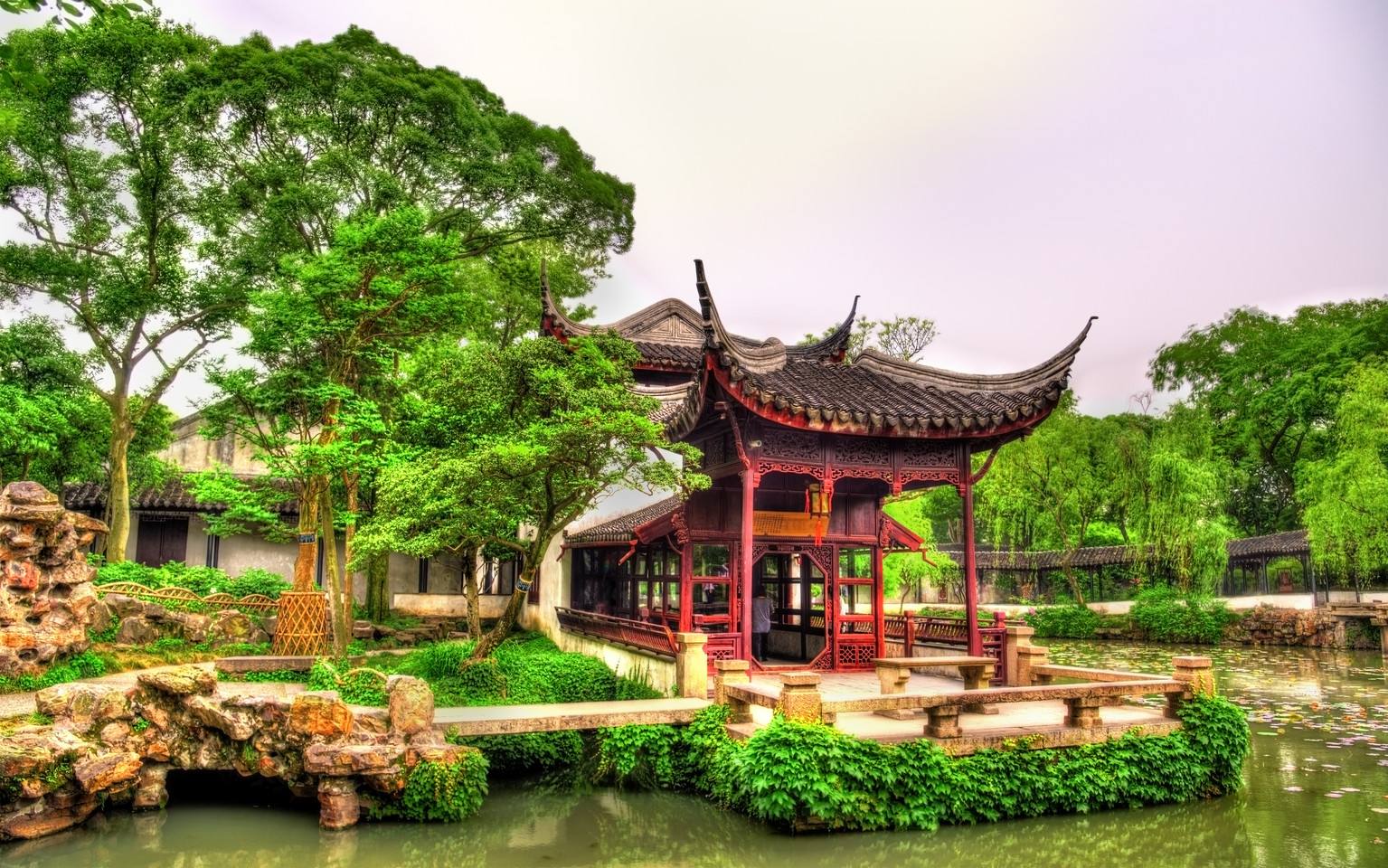Chinese Name: 拙政园 Pronunciation: zhuó zhèng yuán
Suggested Visiting Hours: 2 Hours
Building Time: Early 16th century
Occupied Area: About 52,000 square meters
Address: No 178, Northeast Street, Suzhou city, Jiangsu.
Best Visiting Season: Spring and Autumn (March to May, September to November)
| Tickets | Peak Season (March 1st to November 15th) |
Low Season (November 16th to February 29th) |
| Admission Fee | 80 yuan | 70 yuan |
| Park Gate | Peak Season (March 1st to November 15th) |
Low Season (November 16th to February 29th) |
| Opening Hours | 7:30-17:30 | 7:30-17:00 |
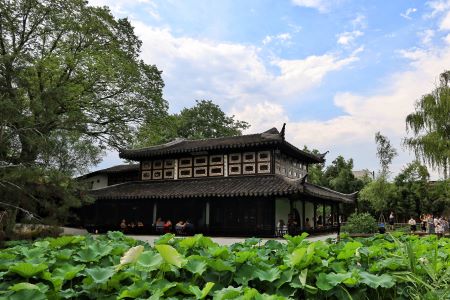
Initially built in the early years of Zhengde in the Ming Dynasty (early 16th century), the garden has a history of over 500 years. As a representative work of Jiangnan classical garden, it was listed as the first batch of key cultural relics protection units by the State Council, together with the Summer Palace, Suzhou Lingering Garden, Emperor Kangxi's Summer Mountain Resort in Chengde, and the Humble Administrator's Garden. Moreover, UNESCO approved its inclusion in the World Heritage List in 1991.
Located in the ancient city - Suzhou, the Humble Administrator’s Garden is the largest existing classical garden in Suzhou, covering an area of about 5.2 hectares. The garden is divided into three parts: the east, the middle, and the west. The middle is the essence of the whole garden. There is a Suzhou Garden Museum in the south, which is the only museum of a garden topic.

In the early sixteenth century, imperial censor Wang Xianchen built the garden because of official failure.
In 1533, Wen Zhengming wrote Wang's Humble Administrator's Garden (Wang Shi Zhuo Zheng Yuan), including 31 scenery drawings and some poems.
After Wang’s death, his son sold the garden to the man whose last name was Xu. Xu’s family lived here for over 100 years. In the end, the garden fell into disuse as Xu's descendants also declined.
In 1631, Wang Xinyi, an assistant minister of the Ministry of Justice, bought the garden. He carefully managed the garden and decorated gullies.
In 1648, Manchu troops (Qing Bing) came here, and Xu's descendants had no way but to sell the garden to scholar Chen Zhilin at a low price.
In 1809, the minister of the Ministry of Justice Zhashui bought the garden.
After the liberation of Suzhou in 1949, the Humble Administrator's Garden and the front houses were used by the Commissioner's office of Suzhou administrative region of Southern Jiangsu.
In November 1951, the renovation was taken place in the garden, including mountains, water, bridges, pavilions, halls, walls, as well as doors, and it was completed in November 1952.
The garden is divided into four parts: the east, the middle, the west, and the residential area. The buildings in the residential area are typical Suzhou houses. The area is arranged as an exhibition hall of a garden museum.
Most existing buildings in the Humble Administrator's Garden were rebuilt in 1850, and at the end of the Qing Dynasty (1636 A.D. - 1912 A.D.), three relatively independent little gardens, namely the east, the middle, and the west area, were formed.
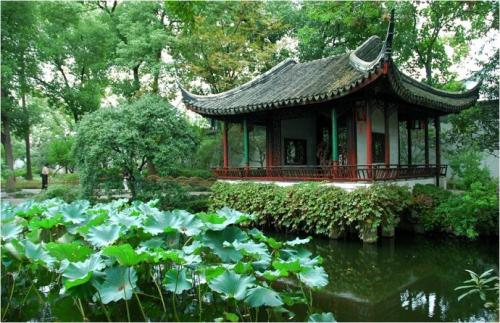
The eastern part was originally called "guitianyuanju" (returning to live in the garden), because it was named after Wang Xinyi, an assistant minister, who came back and lived here in 1631. Because it was completely destoried before, all buildings were newly rebuilt later, covering an area of about 20,667 square meters. The main buildings in the area are Lanxue Hall, Furong Pavilion, Tianquan Pavilion, and Zhuiyun Peak.
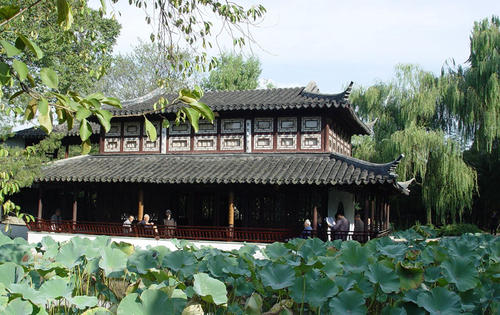
The middle part, accounting for about 12,333 square meters, is the main scenic spot and is the essence of the whole garden. Its overall layout is cantered on those pools, pavilions, and buildings, which are all built near the water. The area of water accounts for about three-fifths of the whole garden area. The buildings with different shapes and heights are arranged nearby. The overall pattern still maintains the artistic style of the gardens in the Ming Dynasty (1368 A.D. - 1644 A.D.), which is lively and simple. "Yuanxiang Hall", famous for the lotus fragrance, is the main building of the Middle part, which is located on the south bank of the water. The water is clear and broad. Lotus is planted everywhere. The scenery here varies with the four seasons.
From the building names, you can find most of them are related to the lotus. Because the lotus represents loftiness, the plant is publicized heavily. And there are some other buildings in the central part, such as Weiguan Building, Yulan Room, Jianshan Building, as well as an exquisite famous garden among the gardens -- the Loquat Garden.
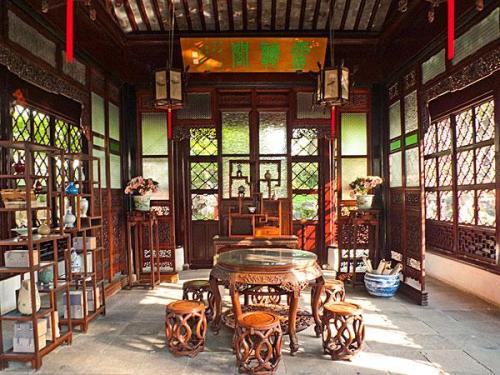
The west garden takes over nearly 8,333 square meters. Its layout is compact. There are pavilions by the mountains and the water. Because of the large-scale reconstruction before, the exquisite artistic style formed in the period of Emperor Qianlong’s reign (1736 A.D. - -1795 A.D.) prevailed, but the style of stones and the water is still similar to the central scenic part. The main building here, near the residential area, is the thirty-six Yuanyang Hall, where the host at that time entertained guests and listened to opera. The furnishings in it are delicate. On sunny days, you can see the outdoor scenery through the blue glass window. Another main building here is Shan Pavilion, inside which, two fan-shaped windows are on the walls on both sides, with one facing Daoying Tower, and the other facing the thirty-six Yuanyang Hall. Other buildings in the west part include Liuting Pavilion, Yiliang Pavilion, and Daoying Tower, etc.
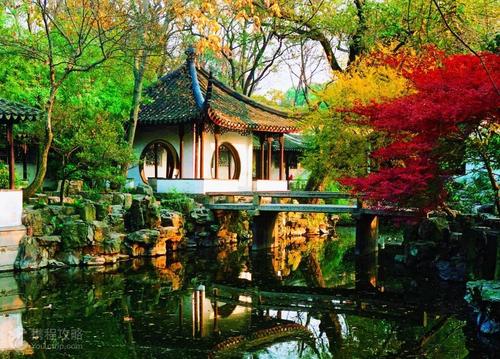
According to two records named Mr. Wang's Humble Administrator's Garden and Records of Returning to Live in the Garden, we can learn that the garden had the advantage of broad land and many puddles on the ground. And the garden made good use of it to dredge the water into a pool. The large area of water creates a cheerful and lively atmosphere, largely maintaining the characteristics of "a broad pool and lush forest" in the Ming Dynasty (1368 A.D. - 1644 A.D.).
The early garden had just a few buildings, but had lush trees and rich natural scenery. The buildings in the garden are very sparse, with only one hall, one building and six pavilions, much fewer than today. Nowadays, the mountain-river landscape, in the middle, occupies about three-fifths of the whole garden area. There are two islands in the pool, and only a few pavilions and small buildings dotted around the pool, making the landscape more spectacular and stunning.
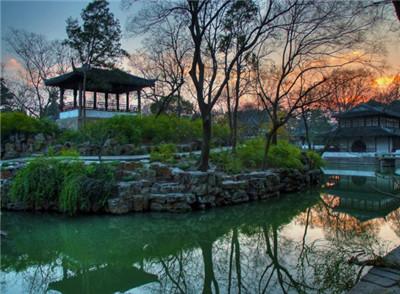
In the early days, most buildings in the garden were separate. However, great changes took place in the late Qing Dynasty. On one hand, there were more and more buildings in the garden, such as halls, pavilions, and corridors. The building density in the garden reached 16.3%. On the other hand, all buildings tended to be combined as building groups. The reason for this change is probably related to the shrinking size of the garden. In the Guangxu period of the Qing dynasty, only 1.2 hectares of garden space remained in the Humble Administrator's Garden.
The Humble Administrator's Garden is famous for its fantastic trees and forest. For hundreds of years, this prominence has been inherited in succession. We can learn that from ancient poems. Until 2014, the garden still maintained the feature, with lotus, camellia, and azalea as the three famous representative flowers.
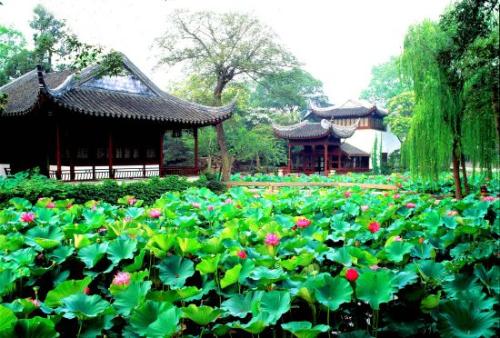
Located in the east garden, Millet Fragrance refers to the fragrance of rice. Outside the walls were all farmlands. In the season of harvest, the autumn wind sent waves of the fascinating fragrance of the rice, so it is named as Millet Fragrance Hall. Millet Fragrance Hall is the main building of the eastern part. Facing hills and water, it is bright and spacious. A total of 48 boxwood carvings on the long window apron are lifelike with refined carving and rich layers. French windows, together with exquisite carvings, make Millet Fragrance Hall simple, elegant, and enjoyable.
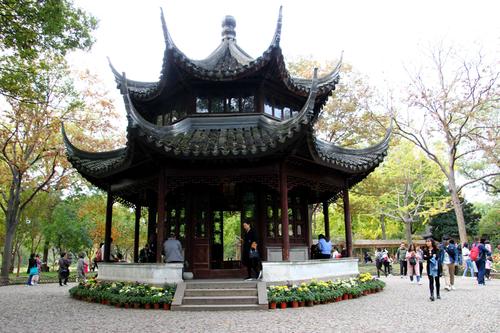
Located in the east garden, Heavenly Spring Pavilion is an octagonal pavilion with multiple high eaves. The external part is a stately winding corridor. Between pillars are benches. The pavilion is surrounded by lawns, flowers and trees. The name “Heavenly Spring Pavilion” comes from the fact that an ancient well is in the center of its floor which was the relics of Dahong Temple in the Yuan Dynasty according to legend.
Located in the central garden, it is an independent closed quiet courtyard with a spacious hall and exquisite yard. The high south wall is like a piece of drawing paper with cane painted on it. Magnolia Hall used to be named as ”Pen Blossom Hall”, which is the same as Wen Zhengming's former residence. It is really a great enjoyment of life to read and paint here.
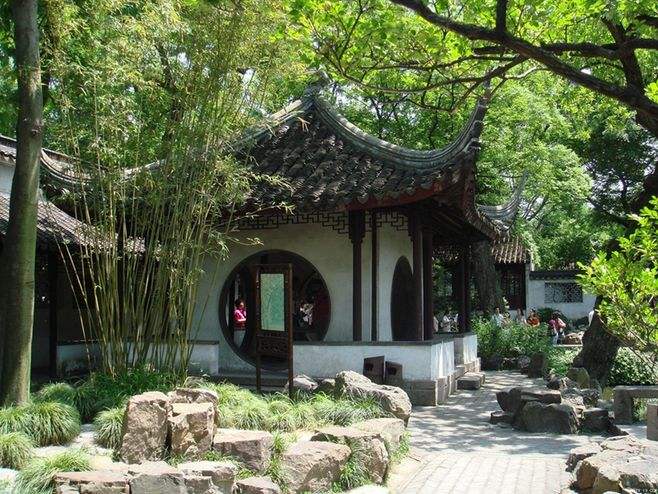
Situated in the central garden, it has a unique architectural style and ingenious conception. Backed by the long corridor, the pavilion is in the face of the wide pool, beside the phoenix trees and bamboos. It is a unique pavilion that has four moon gates on all four sides, providing overlapping circles in many ways for some exquisite scenes from different angles. The four moon gates are transparent, light and elegant, forming beautiful scenery of the four flower windows with water flowing beneath a little bridge, mountains, trees and bamboos, which is meaningful and thought-provoking. The stone tablet is inscribed with the pavilion name written by Wen Zhengming: The Secluded Pavilion of Phoenix Tree and Bamboo.

Suzhou Garden Museum founded in 1992 is China’s first garden theme museum. The new museum was completed and opened to visitors on December 4th, 2007. The new museum is close to the Humble Administrator’s Garden, covering an area of 3,205 square meters, with a construction area of 3,390 square meters. The Garden Museum has five exhibition halls, including Preface Hall, Garden History Hall, Garden Art Hall, Garden Culture Hall, and Garden Heritage Hall, taking the famous Suzhou gardens of all ages as examples to show visitors the rich connotation and artistic charm of the classical gardens of Suzhou. The museum mainly uses gardening tools, furniture, building components and so on to display the traditional gardening process and modern technology to open out the artistic charm of the classical gardens.
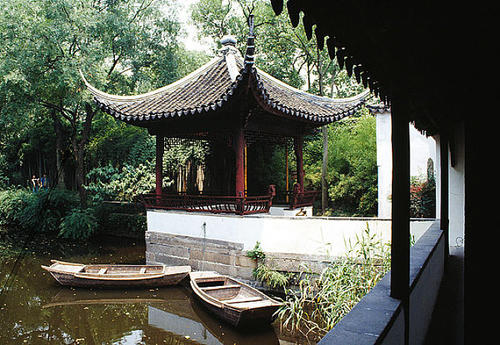
Located in the western garden, it is the octagonal two-tier architecture, high and impressive, truly remarkable. The hill is covered with green grass and thick forests, making the building seem to be floating on top of a green shade, so it is called the “Floating Green Pavilion”. Getting on the pavilion and looking around, one can see green hills, clear water, high sky, and the garden brimming over with vigor and vitality, making people feel delightful and forget to go back home.
It is suitable to travel in the four seasons, especially from April to October, during which you can enjoy the natural scenery of peach blossom and green willow, and thus you can taste fresh peaches, Biluochun (a special brand of tea), sugar lotus root, and other seasonal specialties. Every year from April to October, the Garden holds the Azalea Festival and the Lotus Festival.
If you come to visit in early spring or late autumn, you’d better take a coat in case of sudden cold. It is better to avoid peak periods, like weekends, holidays, and the days before and after Tomb Sweeping Day.
Because there is much green vegetation, comparing with other flowers, the colour contrast can be great. Therefore, you’d better use high-resolution cameras for shooting.
Han Qing Pavilion→Lotus Pavilion→Tianquan Pavilion→Hong Kaoliang Museum→Green Yi Pavilion→Xuexiang Cloud →Lotus Wind surrounded by Pavilion→Far Xiang Tang→Embroidered Peony Pavilion→Castrol Booth→Yulan Hall→Yi Liang Pavilion→Float Cui Ge→Li Pavilion→Tower Shadow Pavilion
Take bus No.313, No.40, or No.811 and get off at the Humble Administrator’s Garden Station.
By Subway
Take Metro Line 1 and get off the subway at the Lindun Road Station and go at exit 4. Then walk about 8 minutes to the Humble Administrator’s Garden.
Chinese: 请带我去拙政园。English: Please take me to the Humble Administrator’s Garden.
If you go to the Humble Administrator’s Garden from Suzhou Railway Station, it takes about 12 minutes (11 yuan).
If you go to the Humble Administrator’s Garden from Suzhou Yuanqu Railway Station, it takes about 17 minutes (23 yuan).
If you go to the Humble Administrator’s Garden from Suzhoubei Railway Station, it takes about 24 minutes (40 yuan).
If you go to the Humble Administrator’s Garden from Suzhou Xinqu Railway Station, it takes about 26 minutes (39 yuan).
If you go to the Humble Administrator’s Garden from Sunan Shuofang International Airport, it takes about 67 minutes (174 yuan).
